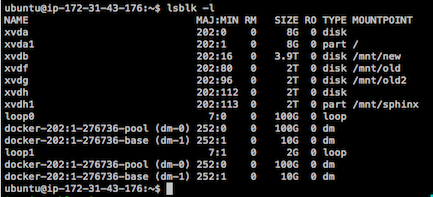Linux Tip Of The Day - lsblk
I suspect a lot of these tips are going to end up being about storage – even today storage is such a pain point. The lsblk command shows you what block storage devices are hooked up to your Linux system. This is really useful for when you attach a new device and need to write a mount statement for /etc/fstab. Personally I use this a lot when I'm using different AWS volumes for organizing my storage.
There's nothing to install – lsblk appears to be a standard command for most *nix systems.
Here's an example of lsblk without any options:

Personally I find the -l option most useful:

Also useful is the -m option which shows permissions:

Posted In: #linux_tip_of_the_day #linux #sys_admin #aws #linux_tip_of_the_day